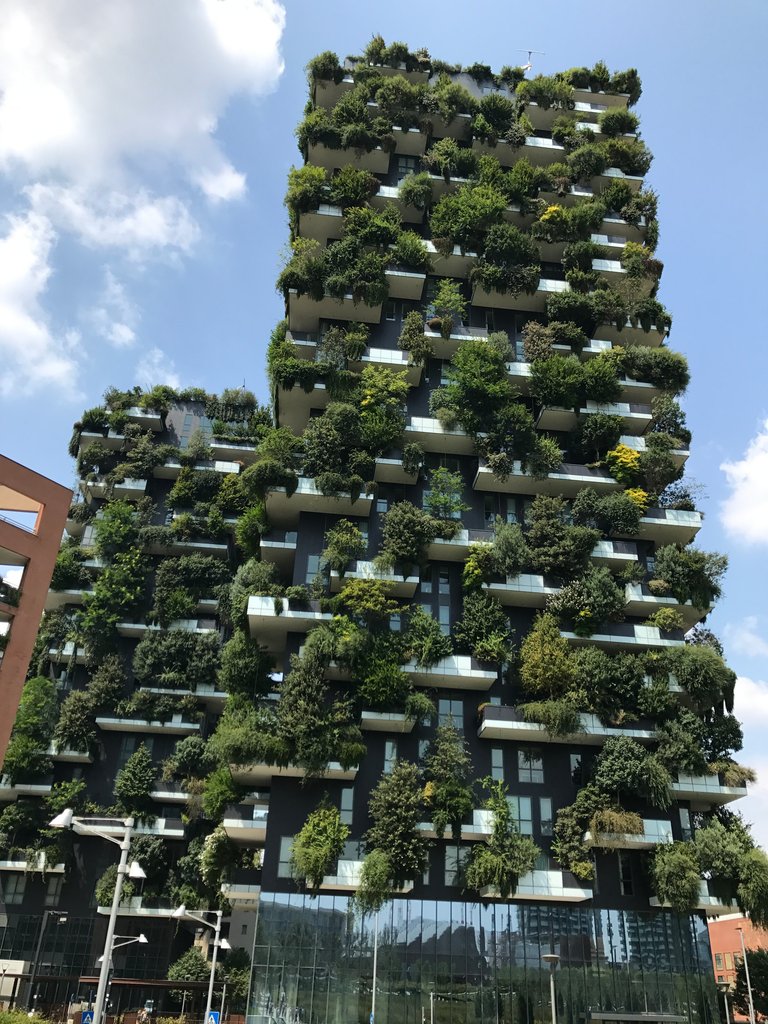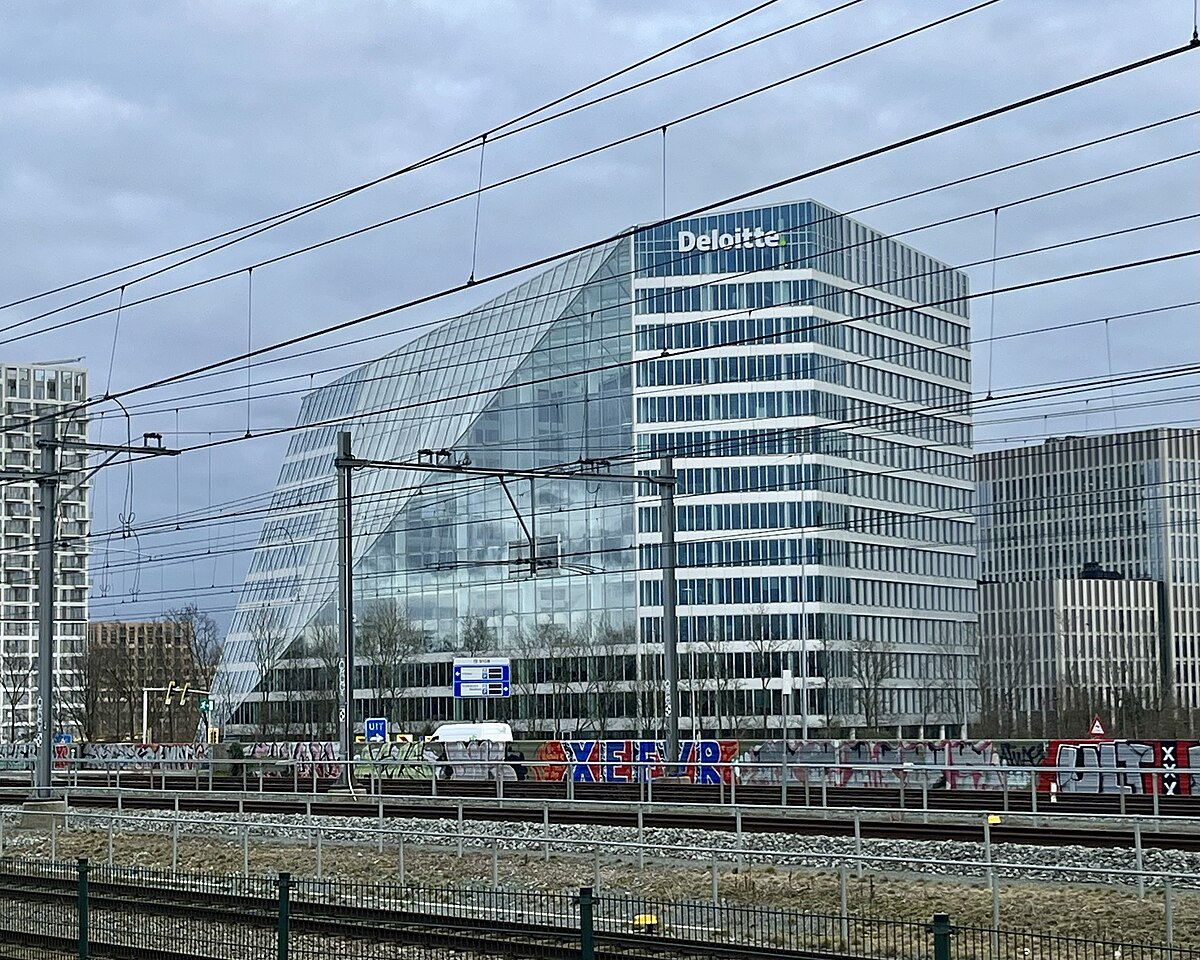Sustainable architecture is no longer just a trend—it’s a necessity. As the world faces climate change, dwindling resources, and the demand for healthier living spaces, architecture in 2025 is undergoing a remarkable transformation. Architects are finding innovative ways to ensure buildings work in harmony with nature. Let’s take a closer look at the key trends that are reshaping sustainable architecture.
Biophilic design: Bringing nature indoors
In 2025, biophilic design—integrating nature into buildings—plays a central role in sustainable construction. Features like green roofs, indoor gardens, and large windows that allow natural light to flood in don’t just look great; they also reduce stress, boost productivity, and help people feel more connected to nature.
Examples like Bosco Verticale in Milan and Jewel Changi Airport in Singapore show how greenery and modern design can combine to create urban oases.
Net-Zero Energy Buildings: Balancing the Scales
wikipedia.org
Net-zero energy buildings (NZEBs) are becoming increasingly common. These structures generate as much energy as they consume, thanks to renewable energy sources like solar panels and wind turbines, paired with energy-efficient technologies.
A standout example is Powerhouse Brattørkaia in Norway. This office building doesn’t just generate surplus energy—it also uses natural light, ventilation, and low-carbon materials, setting a benchmark for future construction.
Adaptive reuse: giving old buildings new life
Instead of tearing down old structures, architects are repurposing them into something new. This approach not only reduces waste but also preserves cultural heritage and saves resources.
London’s Tate Modern (a former power station turned art museum) and New York City’s High Line (an abandoned railway transformed into an urban park) showcase how creative reuse can bring fresh purpose to old spaces.
Cutting-edge sustainable materials
The search for sustainable materials has led to exciting breakthroughs. Cross-laminated timber (CLT), recycled steel, and low-carbon concrete are revolutionizing construction by being durable, eco-friendly, and even capable of absorbing carbon.
One fascinating development is self-healing concrete, which uses bacteria to repair cracks, extending the life of structures and cutting maintenance costs.
Smart Building Technologies
Technology is playing a big role in sustainable architecture. Smart systems that adjust lighting, heating, and cooling in real time not only save energy but also make buildings more comfortable. IoT (Internet of Things) devices ensure seamless integration of these systems, creating efficient and responsive buildings.
Amsterdam’s The Edge, known as one of the smartest buildings in the world, is a great example of how technology can transform architecture.

Wikipedia.org
Designing for health and wellness
There’s growing awareness of the impact buildings have on physical and mental health. Architects are now focusing on improving air quality, maximizing natural light, and creating spaces that promote activity and well-being.
The WELL Building Standard, which prioritizes occupant health, is becoming increasingly popular. Certified buildings feature better ventilation, ergonomic design, and access to nature.
Climate-resilient design: built to withstand change
With climate change bringing more extreme weather, architects are creating resilient designs that can adapt to environmental challenges. This includes flood-proof buildings, heat-resistant materials, and flexible spaces.
A prime example is the Floating Office Rotterdam—a carbon-neutral building that rises and falls with sea levels, offering a practical solution for coastal regions.
The Future of Sustainable Architecture
The future of sustainable architecture lies in collaboration. Architects, engineers, and policymakers must work together to scale these innovations and make them accessible to everyone. With ongoing advances in technology and a focus on ecological and social responsibility, we’re moving toward a greener, more sustainable world.
By combining creativity, education, and teamwork, the architectural community can lead the way in building a better future.
Architecture must be a great team. I agree that sustainable designs are becoming more and more of a necessity. Interesting post
Thanks :)
The future of architecture is not only sustainable but also beautiful. I would long to see in my city some building with as much green as the first photo you shared. I think little by little we need to get back to nature, even the busiest capitals need to do that. I really liked your post.
Thank You :)
Sustainable architecture allows us to create beautiful buildings, which in addition to beautifying the city contribute to the care of the planet, the building looks like a giant tree, thank you for sharing this architectural gem.
Greetings!
Thanks :)